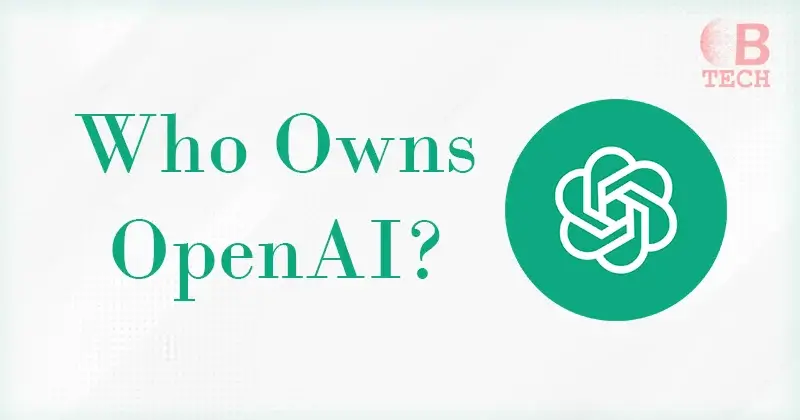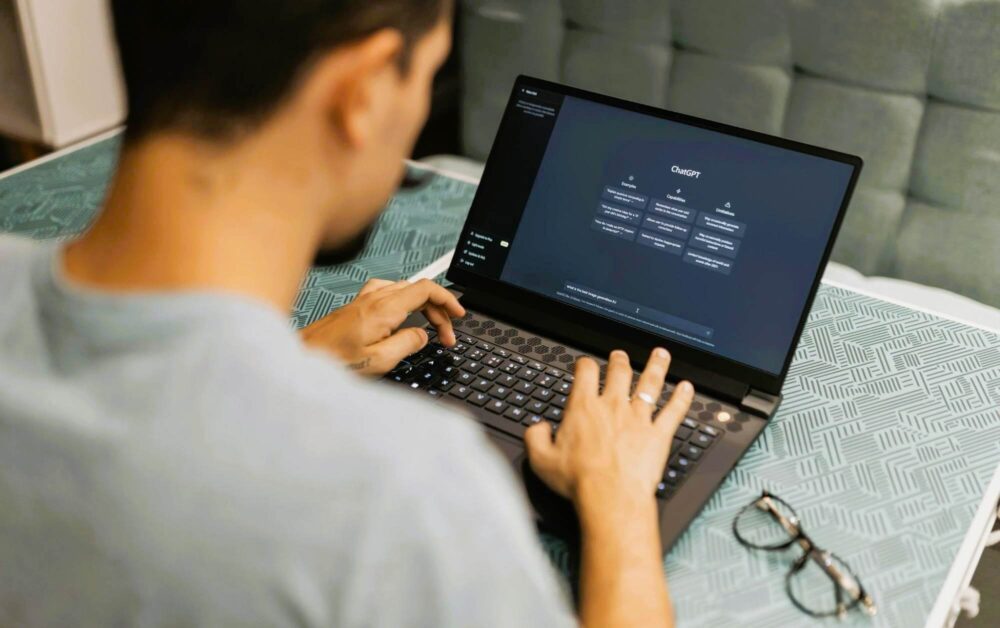In the fast-changing world of artificial intelligence, one organization has consistently been a leader in AI development: OpenAI.
OpenAI is known for its revolutionary tools, with ChatGPT being one of its most well-known AI chatbots. However, the company’s board has faced some controversies.
For example, in late 2023, CEO Sam Altman was ousted for four days. Additionally, in 2024, Elon Musk filed a lawsuit against OpenAI, accusing the company of prioritizing profit over its original humanitarian goals.
Today, we’re going to explore OpenAI’s backstory and address some of the most common questions people have about the company.
Key Facts
- OpenAI, founded in 2015 by industry leaders, aimed to lead ethical AI development.
- Six prominent tech visionaries from Silicon Valley created ChatGPT.
- In 2019, OpenAI became a for-profit entity and formed a strategic alliance with Microsoft, which boosted its research and outreach efforts.
- Remaining a private company, OpenAI can focus on its mission without the usual pressures public companies face.
- OpenAI manages to balance its foundational mission and commercial goals effectively.
Who are the Co-Founders of OpenAI?
OpenAI was founded by a group of tech visionaries from Silicon Valley:
- Elon Musk: Known for SpaceX and Tesla, Musk provided financial support to OpenAI and was a board member before stepping down. He remains influential in AI discussions.
- Greg Brockman: Formerly the CTO of Stripe, Brockman is now the Chairman and CTO of OpenAI, overseeing its cutting-edge AI research.
- Ilya Sutskever: A machine learning expert, Sutskever worked at Google before becoming the Chief Scientist at OpenAI.
- John Schulman: Schulman was involved in academia before joining OpenAI. He has contributed significantly to projects like ChatGPT.
- Wojciech Zaremba: Zaremba co-founded OpenAI, bringing his expertise in reinforcement learning from his time at Google.
- Sam Altman: Altman, the former president of Y Combinator, joined OpenAI early on and served as its CEO.
When Did OpenAI Get Started?
OpenAI was founded on December 11, 2015, with a unique mission. It wasn’t just another startup; it was created as a response to the concern about AI being monopolized by large tech companies.
The goal was clear and ambitious: to develop “artificial general intelligence” for the benefit of humanity.
Who Currently Owns OpenAI?
Initially, OpenAI received significant support from industry leaders like Elon Musk and Peter Thiel, who wanted to prevent AI from being controlled by a few big companies.
However, in 2018, Musk resigned from the board to avoid potential conflicts with his other ventures like Tesla and SpaceX.
In 2019, OpenAI transitioned from a nonprofit to a “capped-profit” for-profit entity. This change was fueled by a $1 billion investment from Microsoft, which also gained certain rights to use OpenAI’s technology.
Today, the ownership of OpenAI is divided between Microsoft (49%), other stakeholders (49%), and the original OpenAI nonprofit foundation, which maintains its autonomy. Other shareholders include a16z, Sequoia, Tigers Global, and Founders Fund.
OpenAI Inc. oversees the nonprofit aspects, while OpenAI LP manages the commercial aspects of the company.
OpenAI: Is It a Public Company?
Even though OpenAI is a major player in the AI field, it is not a publicly traded company. Being private, it doesn’t have to deal with the strict regulations and quarterly pressures that public companies face.
However, there is considerable demand for OpenAI stock, so it’s possible that the company may consider going public in the future.
Drama Unfolds: Elon Musk Sues OpenAI
In a dramatic turn of events, Elon Musk, a co-founder of OpenAI, filed a lawsuit against the organization at the end of February 2024. Musk, who helped establish OpenAI in 2015 with the noble goal of creating artificial general intelligence (AGI) to benefit humanity, alleged that the company had strayed from its original mission and was now driven by profit motives.
- Musk’s Allegations: Musk’s lawsuit, available in a PDF format, accuses OpenAI of transforming into a profit-oriented entity, particularly since it became associated with Microsoft. Despite OpenAI’s claims on its website to develop AGI for the benefit of humanity, Musk contends that the organization is now focused on refining AGI to maximize profits for Microsoft, rather than for the greater good.
- Musk’s Legal Demands: The lawsuit seeks to compel OpenAI to adhere to its Founding Agreement and return to its original mission of developing AGI for the benefit of humanity. Musk demands that OpenAI make its research publicly available and refrain from using assets like ChatGPT for profit-making purposes.
- OpenAI’s Response: In response to Musk’s claims, OpenAI issued an open letter, rebutting his allegations and providing insights into the organization’s history and decision-making process.
- OpenAI’s Perspective: The letter, written by the board members, reveals that in late 2017, Musk and OpenAI’s leadership discussed transitioning to a for-profit entity. Musk reportedly wanted majority equity, initial board control, and the CEO position. However, the discussions hit a roadblock as OpenAI believed that absolute control by any individual, including Musk, was against the organization’s mission.
- Musk’s Departure & xAI: Eventually, Musk chose to leave OpenAI, citing a belief that OpenAI’s probability of success was zero. He also announced his intention to develop an AGI competitor within Tesla, which materialized with the launch of xAI in July 2023 and the introduction of the chatbot Grok in November 2023.
The legal battle between Elon Musk and OpenAI highlights the complexities and challenges of developing AGI. It underscores the importance of clear mission alignment and governance structures in organizations working on cutting-edge technologies with profound societal implications.
Curious Case of Sam Altman’s Departure & Return to OpenAI
The news on November 17, 2023, sent shockwaves through the tech world: Sam Altman, then CEO of OpenAI, was suddenly dismissed from his role. Mira Murati, the company’s chief technology officer, stepped in as interim CEO, only to be replaced shortly after by Emmett Shear, the former CEO of Twitch, who was appointed as the new CEO.
Following his dismissal, Microsoft CEO Satya Nadella extended an offer to Altman to lead an internal AI division at Microsoft. Altman accepted the offer, leading to speculation about his future at OpenAI.
Just four days after accepting the role at Microsoft, Altman surprised many by resuming his position as CEO of OpenAI. This decision came after discussions and negotiations between Altman and the board.
The board had expressed concerns about Altman’s transparency and rumored desire to accelerate AI development despite potential risks. However, both sides eventually reached a compromise, ending the brief period of uncertainty and the unexpected CEO shuffle at OpenAI.
Sam Altman’s brief departure and return to OpenAI underscore the complexities and challenges faced by organizations working in cutting-edge fields like AI. The incident also highlights the importance of clear communication and alignment between leadership and the board in navigating such transitions.
FAQs
What is the Ownership Structure of OpenAI?
OpenAI started as a nonprofit but later created a for-profit entity, OpenAI LP, which operates under OpenAI Inc. Sam Altman is the CEO of OpenAI LP. This change was made to attract investments needed for intensive research and development. OpenAI LP is overseen by the nonprofit OpenAI Inc. to ensure alignment with the original mission of developing AGI for the benefit of humanity.
How Does OpenAI’s Ownership Impact Its Operations and Goals?
OpenAI’s ownership structure, balancing non-profit and capped-profit elements, significantly impacts its operations and goals. The company prioritizes a mission-first approach, focusing on the safe and equitable development of AGI. The capped-profit model allows OpenAI to attract investment and talent competitive with leading tech companies, while its nonprofit roots ensure a continued focus on ethical AI development.
Are There Any Notable Investors or Partners in OpenAI?
OpenAI has attracted significant investments and partnerships. Microsoft is a major investor and partner, providing capital and computing resources for OpenAI’s AI models. Other investors include Reid Hoffman’s charitable foundation and Khosla Ventures. These partnerships are crucial in supporting OpenAI’s research and development goals.
Final Takeaway
OpenAI’s unique capped-profit model combines mission-driven research with commercial pragmatism. This structure ensures a steady flow of funds for cutting-edge research while maintaining the organization’s foundational principles.
As the field of AI rapidly evolves, OpenAI’s flexible ownership and operational model allow it to adapt and reorient itself while remaining committed to democratizing the benefits of AI.
Related Articles:



